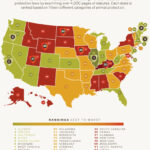Animal cruelty is a harrowing topic that has been woven into the fabric of human history since time immemorial. Between ancient practices steeped in superstition and modern legal frameworks designed for animal welfare, the evolution of how societies view and treat animals is both profound and disturbing. This exploration illuminates the gradual shift in attitudes toward animals, providing insight into why such a shift is pivotal for contemporary society.
Historically, animal cruelty can be traced back to ancient civilizations. In the annals of Sumerian, Egyptian, and Greek cultures, one can find numerous accounts of animals being subjected to inhumane treatment. Sumerians, for example, revered certain animals and associated them with deities. Yet, livestock were often treated with callous disregard, especially when it came to sacrificial practices. This paradoxical relationship between reverence and disregard lays the groundwork for understanding humanity’s complex relationship with the animal kingdom.
The ancient Egyptians held cats in high esteem, viewing them as sacred creatures, yet they were known to mistreat other animals, particularly those seen as inferior or unworthy. This contradiction highlights a common observation throughout history: the treatment of animals frequently reflects societal values and beliefs. Animals often symbolize what humans fear, love, or value in their own cultures, drawing a direct line between the moral considerations of society and the treatment of these sentient beings.
As we move into the realm of Ancient Greece and Rome, the story only deepens. These cultures debated the ethics of animal treatment, yet actual practices often contradicted their philosophical musings. The philosopher Aristotle, for example, spoke of animals as beings without reason, justifying their use for labor and entertainment. This idea, while challenged by later thinkers, perpetuated a culture in which animals were viewed primarily as instruments for human benefit. The horrific spectacles of gladiatorial combat and animal hunts served as stark reminders of how entertainment and power dynamics could manifest in the systematic cruelty of animals.
The darker side of human nature is often illuminated in the medieval period. During this time, it was not uncommon for animals to be put on trial. While this bizarre practice may seem a relic of a superstitious past, it emphasizes a deeper understanding of societal values regarding justice, morality, and the role of animals in human life. Documented cases of animals being prosecuted for their alleged transgressions, such as pigs charged with murder or roosters tried for causing a man’s death, reveal not only a pervasive belief in the sentience of these creatures but also an unsettling tendency to project human characteristics onto them. This phenomenon may suggest that humans have always struggled to reconcile their ethical beliefs with their actions.
Transitioning into the early modern period, shifts in religious and philosophical thought began to pave the way for increased recognition of animals as sentient beings. Movements toward compassion and empathy among Enlightenment thinkers began to challenge deep-seated norms. Philosophers like Jeremy Bentham ignited discussions about animal welfare, asking pointedly whether the capacity to suffer should dictate how beings are treated, regardless of their species. This pivotal moment set into motion changes in legislation aimed at protecting animals from undue harm.
The Industrial Revolution marked a further turning point. As societies became more urbanized, the connections people had with farm animals diminished. Increasing urbanization led to a disassociation from the source of food and labor, which in turn created a more pervasive indifference to the suffering of animals. Factory farming emerged, resulting in unprecedented cruelty against livestock. The widespread abuse in these systems led to burgeoning animal rights movements where activists began to document and advocate against such practices, instilling a sense of urgency and ethical responsibility regarding animal welfare.
The latter part of the 20th century saw a paradigm shift in public perception, culminating in the formation of organizations dedicated to ending animal cruelty. Legislative frameworks like the Animal Welfare Act in the United States emerged, reflecting a growing recognition of the need for legal protections for animals. Yet, while laws regarding animal cruelty have increased, the complexity of enforcement and societal adherence raises questions about whether legal measures are sufficient. A common observation here is that laws often lag behind societal values, reflecting a persistent challenge faced by advocates in the push for change.
In the contemporary context, animal cruelty manifests in various forms, from the disturbing practices found in factory farms to the disturbing trends of animal fighting. The fascination and repulsion elicited by such cruelty demand engendered discussions about moral responsibility. While laws exist, much remains to be done to bridge the gap between legislation and cultural attitudes towards animals.
The evolution of animal cruelty laws reflects an ongoing struggle between ethics, culture, and economic interests. From ancient myths and practices to modern advocacy, society has walked a complicated path that continues to evolve. As we stand at the intersection of past cruelties and future possibilities, our challenge remains: to foster compassion that transcends species and engenders a holistic recognition of the rights of all sentient beings. In this pursuit, the question of when animal cruelty first began may be less significant than asking what we will do next to stop it.






